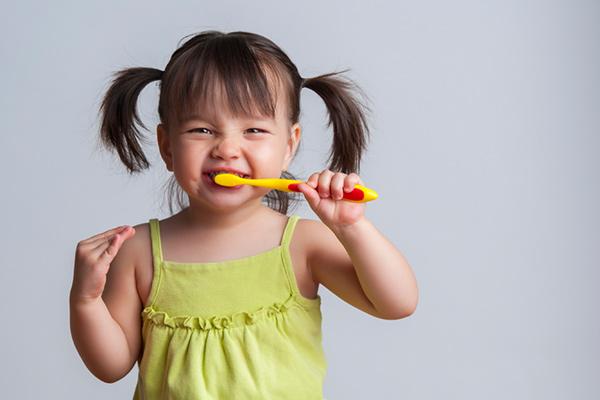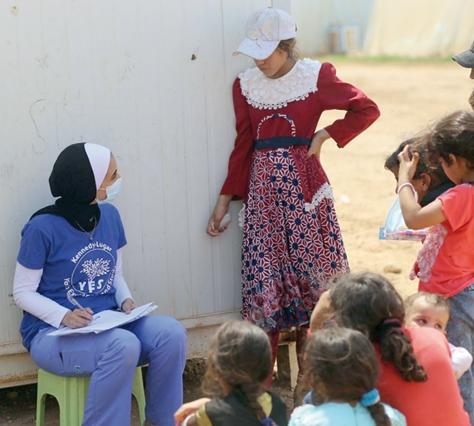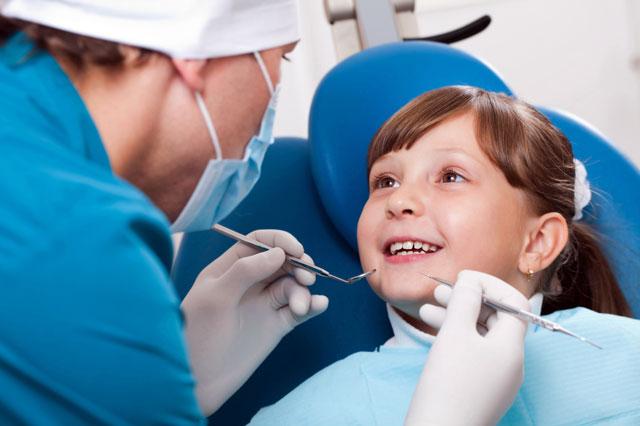You are here
Kids start brushing too late, use too much toothpaste
By Reuters - Feb 10,2019 - Last updated at Feb 10,2019

Photo courtesy of babygooroo.com
Most children are using too much toothpaste, do not brush often enough and do not start brushing their teeth at a young enough age, according to a US survey.
Parents should brush infants’ teeth when the first tooth appears, which can be as early as age six months. And they should help their kids brush until the kids are independent enough to thoroughly and correctly brush do it themselves, the Centres for Disease Control and Prevention (CDC) and paediatrician groups advise.
“Cavities are one of the most common chronic diseases in children, and untreated cavities can cause pain, infections, and problems eating, speaking, and learning,” said the study’s lead author, Dr Gina Thornton-Evans of the CDC Division of Oral Health in Atlanta, Georgia.
“Children with poor oral health often miss more school and receive lower grades than children with better oral health,” she said in an e-mail.
While starting to brush as soon as teeth begin appearing is recommended, ingesting too much fluoride can harm still-forming teeth, the study team notes in CDC’s Morbidity and Mortality Weekly Report. So the CDC recommends that children do not use fluoride toothpaste until they are two years old.
Children under age three should use a smear of toothpaste the size of a rice grain, and children ages three to six should use a pea-sized amount, they add.
To see whether US parents follow these guidelines, Thornton-Evans and colleagues analysed responses from parents and caregivers of more than 5,100 children and teens to a nationally-representative survey.
The research team found that about half of children between ages three and six used the recommended pea-sized amount of toothpaste when they brushed, but 38 per cent used a half- or full-load of toothpaste, which is too much.
Nearly 80 per cent of kids ages three to 15 began brushing their teeth at a later age than recommended. About 61 per cent brushed their teeth twice a day, while 34 per cent brushed only once daily.
Researchers also found differences in brushing habits based on race and ethnicity, as well as the education and income levels of the parents. For instance, children who lived with a parent or caregiver with less than a high school education and Mexican-American children were most likely to have started brushing and using toothpaste after age three.
The CDC and the American Academy of Paediatrics have begun to develop messages for pregnant women and new mothers about toothbrushing practices, the study team notes.
“There is a huge opportunity for parents and caregivers to help prevent their children from developing early childhood cavities,” Thornton-Evans said. “As children get older, parents should supervise their children brushing and spitting out toothpaste until good brushing habits are formed.”
Education programs should also help parents use behavioural shaping strategies to reinforce toothbrushing habits, said Brent Collett of the University of Washington School of Medicine in Seattle, who was not involved in the study.
“With toothbrushing, the main thing that parents may find difficult is the child refusal behaviour,” Collett said in a phone interview. “It’s hard when kids are throwing a tantrum.”
Parents can start by asking their children to wet their toothbrush at the sink, he said, and then work up to squeezing out the right amount of toothpaste and then brushing teeth thoroughly. For the first few years, parents may need to brush their kids’ teeth for them and with them to ensure it’s done adequately.
“Sometimes parents think their kids are brushing their teeth, but they’re just chewing on the toothbrush,” Collet said. “Parents may not realise they’re the ones who need to do this to get the teeth clean.”
Related Articles
Even though people are born with microbes in their mouth that they inherited from their parents, these bacteria are not associated with toot
AMMAN — On August 4, Shahid, a 13-year-old girl living in a camp in Ad-Dafyanah in the north of Jordan, met a dentist for the first time in
Environmental factors appear to play a bigger role than genetics in shaping children’s risk for cavities, a study of Australian twins sugges


















